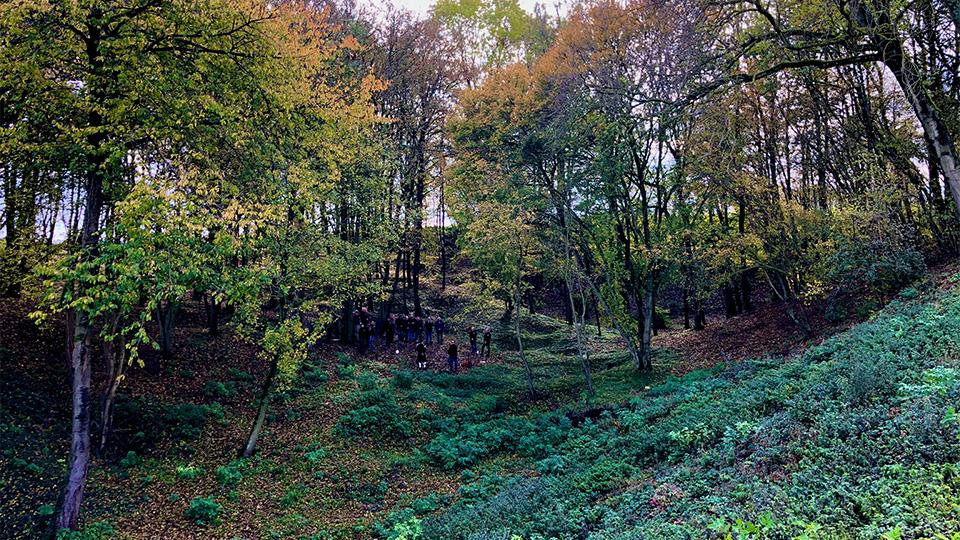New research reveals First World War secrets
Primary page content
A world-first study has uncovered evidence of how German soldiers used the blast which kickstarted the Battle of the Somme to their advantage as a new defensive position.
The mine explosion at Hawthorn Ridge was a pivotal moment of the First World War, that marked the opening of the Battle of Somme on July 1, 1916. It remains one of the best-known pieces of film from the whole conflict.
Now, for the first time, a scientific study of the historically important Crater led by Keele University and supported by Goldsmiths provides new significant insights into how this gave the Germans an advantage.
British forces infamously detonated the mine 10 minutes early, in what was later described as a ‘colossal blunder’. This alerted the Germans that attack was imminent and gave them time to take up defensive positions in the newly-formed crater, leading to heavy losses among the attacking British troops.
A team of researchers, scientists and historians, including Professor Peter Doyle, lecturer in military history at Goldsmiths, have used cutting–edge technology, including drones with imaging cameras, to examine the crater like never before, on land that had been in private ownership for almost 100 years.
The group were given exclusive access to the understudied site in France by the Hawthorn Ridge Crater Association, which took on the lease of the land in 2018 and provided the first opportunity for a detailed study.
Professor Peter Doyle said: “The Germans had quickly mastered the art of capturing craters and used this to their advantage. Though they lost many men in the initial blast, the crater became a part of the German frontline, meaning that the chance to break through the line here was lost.
“Our study has provided new evidence of the strongpoint the Germans built from the captured crater in the middle of No Man’s Land that doomed the British attack to failure. This reinforces the idea that blowing the mine ten minutes early, to give the earth time to settle, was a very bad idea. It was only with concerted effort four months later, and a new mine, that Hawthorn Redoubt was captured by the Highlanders.”

Researchers discovered and excavated two sections of trenches, known as fire bays, that were used to consolidate newly-formed craters, highlighting how the Germans successfully incorporated the crater rim into their front line after the blast.
They also recovered probable communication wire and distinctive German barbed wire, and found evidence of a previously unknown shallow tunnel, believed to have been dug out from the crater by German forces to provide an advanced position in No Man’s Land. They say their findings reveal new details on the history of the crater, its capture by the Germans and how they successfully incorporated it into their front line after the blast.
Dr Jamie Pringle, a forensic geoscientist at Keele University, said: “The explosion of the mine was the very first action of the Battle of the Somme, intended to give Allied forces the upper hand. We found physical evidence for the first time of how German soldiers had consolidated part of the crater left behind after the explosion, and actually used it to their advantage as a new defensive position.”

Dr Kris Wisniewski, a lecturer in Forensic Science at Keele University, added: “Using drones with imaging cameras, we were able to image remotely a probable sap or shallow tunnel to the northwest of the crater, showing the German mastery of No Man’s Land after the initial detonation.”
The research team included representatives from Keele University, London South Bank University, Staffordshire University, Atlantic Technological University, Goldsmiths, University of London, Stoke-on-Trent Archaeology Service and Cotswold Archaeology.
The findings of the study help to further understanding of the Battle of the Somme and the First World War. Professor Peter Smith notes: “What this study helps to highlight is a moment in time, a ten-minute gap in knowledge that the British paid for dearly.
“From this point on the British would learn that there was no need to fire mines so early; this would influence the hugely successful battle of Messines in June 1917, which see many mines fired and lead to the capture of the German lines.”
